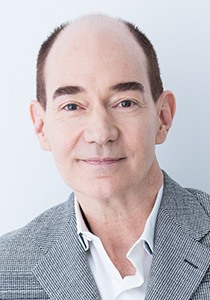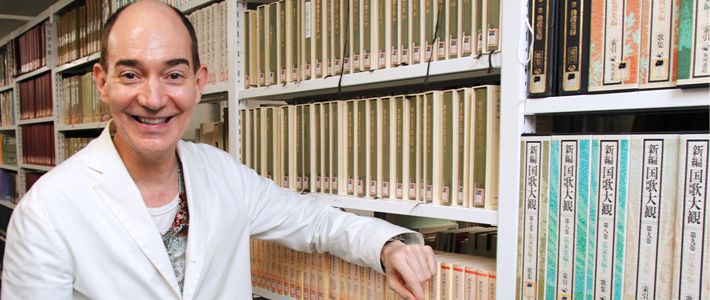
Making the Most of Serendipity
Culture Lifestyle- English
- 日本語
- 简体字
- 繁體字
- Français
- Español
- العربية
- Русский
Professor of Japanese literature at the University of Tokyo, book review editor at a national newspaper, and a frequent guest on television and radio, literary scholar Robert Campbell’s diverse activities have placed him at the forefront of the Japanese cultural scene. As an American who has now spent 26 years in Japan, how does Campbell view the juxtaposition of ancient tradition and cool modernity that characterizes modern Japan? We talked to Campbell about the attractions of Japanese culture and its potential for the future. (Interviewed by Ukai Tetsuo [deputy editor] and Machida Shin’ya [staff writer], Culture News Department, Yomiuri Shimbun.)
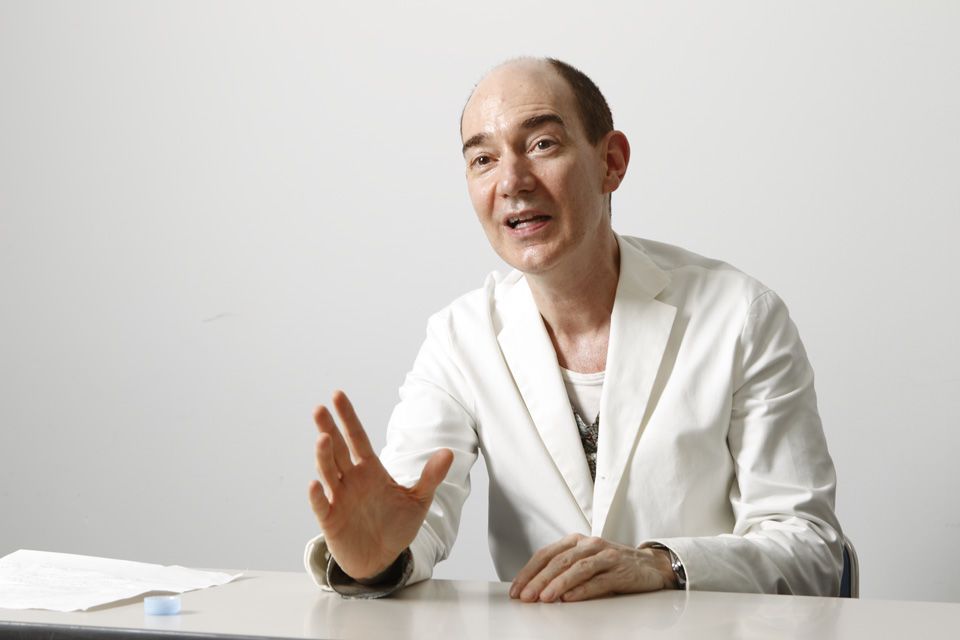 INTERVIEWER You seem to be extraordinarily busy.
INTERVIEWER You seem to be extraordinarily busy.
ROBERT CAMPBELL At the moment, I appear on a morning TV show once a week and host two radio shows, one monthly and the other twice a month. I appear on other programs on an irregular basis when I’m asked. I’m also on the editorial committee for the book review pages at the Yomiuri Shimbun, which meets twice a month. Then there are various lectures and such. As much as possible, I try to concentrate the bulk of my university teaching from Tuesday through Thursday and use whatever time is left over for other activities.
INTERVIEWER For a literary scholar, you are quite engaged with the wider world. What drives you to work in such a variety of different spheres?
CAMPBELL The different kinds of work I do bring me into contact with different kinds of people, and require different levels of language. I enjoy the variety. Also, I think if you’re genuinely interested in reaching out and communicating with people, it’s not enough just to hold out a hand and wait for someone to take it. You have to throw yourself into things wholeheartedly if you want to achieve real results. Once you make that commitment, each of these different activities becomes part of your identity. So I don’t feel any contradiction between myself as a scholar and the person I am as a commentator on TV. If anything, it’s the diversity that keeps things interesting. For example, I was on a TV show recently when the conversation turned to the Nadeshiko Japan women’s soccer team that won the World Cup in July. We were talking about the team’s prospects in the Olympic qualifiers this fall, when I happened to mention that the nadeshiko [Dianthus superbus, or Large Pink] has been celebrated in Japan since ancient times as one of the seven plants of autumn. I think that working beyond the confines of academia allows me to make the most of my background and experiences, both as a scholar of literature and as someone who has divided his life between Japan and the United States.
Language as a Way into Art
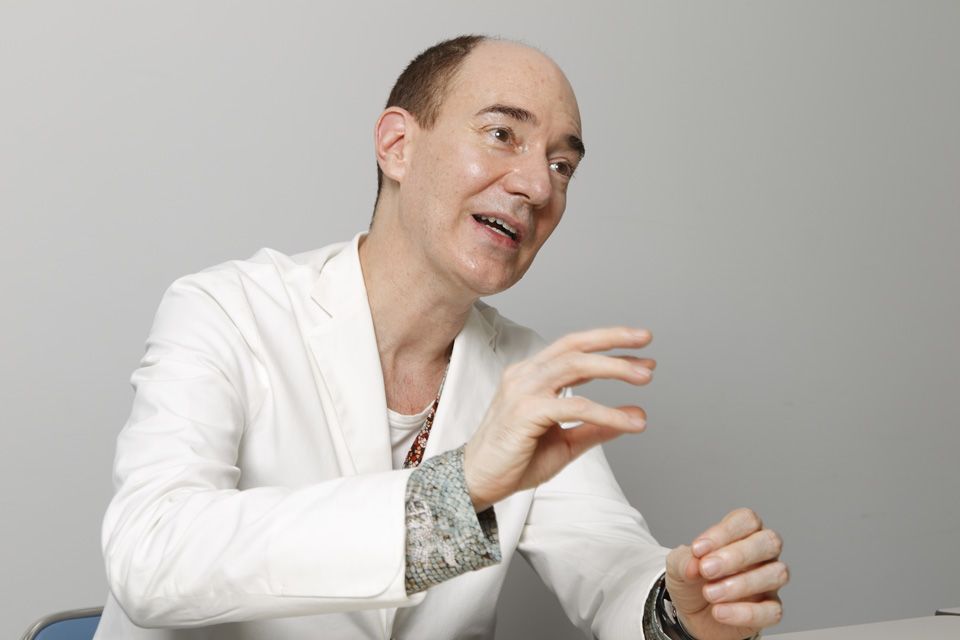 INTERVIEWER Could you tell us a little about how you first became interested in Japanese language and culture?
INTERVIEWER Could you tell us a little about how you first became interested in Japanese language and culture?
CAMPBELL My grandparents immigrated to America from Ireland, and I grew up in the Bronx, not far from Yankee Stadium. During middle school, I moved from New York to California and ended up attending UC Berkeley. This was during the 1970s, at the height of postmodernism, when we had people like Michel Foucault on campus. My main interests were modern philosophy, literature, and art. Then one day in my freshman year, during a class on Nabokov, the professor happened to mention that the oldest novel in the world was something called The Tale of Genji, written in Japan in the eleventh century. (*1)
INTERVIEWER The classic of classics.
CAMPBELL I went out and bought a copy of the translation by Edward Seidensticker right away. Remember, this was when postmodernism was rampant and people were confidently announcing the ”end of literature.” I sensed something in classical Japanese literature that seemed to offer a way of breaking away from that way of thinking. I was taking a class on Japanese art at the time, which is where I encountered a genre of paintings called Rakuchū rakugai-zu for the first time. These are screen paintings from the Azuchi-Momoyama period [1568–1603] depicting bird’s-eye views of scenes in and around Kyōto, the capital. Wreathed in a distinctive framework of trailing mist were whole crowds of living, breathing people from all ranks and walks of life—merchant women carrying their wares on poles across their shoulders, men fighting, Buddhist priests begging for alms . . . I felt a tremendous energy emanating from the paintings.
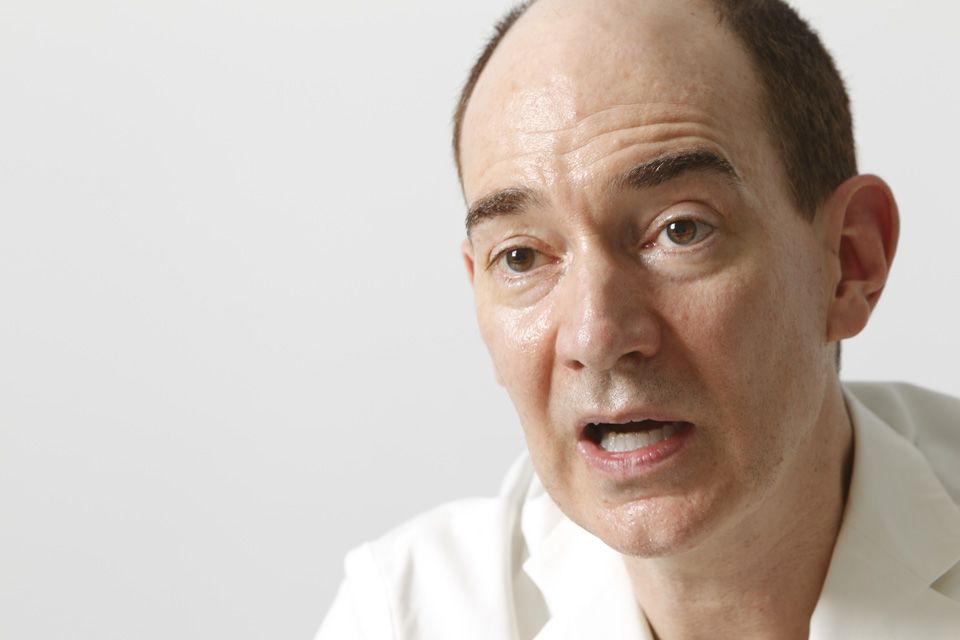 INTERVIEWER That was perhaps one of the most energetic periods in the whole of Japanese history.
INTERVIEWER That was perhaps one of the most energetic periods in the whole of Japanese history.
CAMPBELL I wanted to see more of these Japanese paintings, and I asked the professor for advice. The professor told me, “You can look at paintings any time—learn the language first.” I had the gall to argue back. “I have a pair of eyes and optic nerves just like you,” I said. “Why should I study a language in order to look at paintings? Surely we’re all equal in front of a painting?” The professor told me that if I studied the language, I’d be able to learn the stories of the people depicted in the Rakuchū rakugai-zu. How wide were the fronts of the houses they lived in? What kind of work did they do? Why is this person laughing? Why is this one crying? I was convinced, and I enrolled in an intensive beginners’ Japanese course during the summer vacation of my freshman year. I think that was some of the wisest advice I ever got.
INTERVIEWER You were lucky to have such a good teacher.
CAMPBELL I took intermediate Japanese in my sophomore year, and then during the summer before junior year I enrolled in an intensive language program at Middlebury College in Vermont. This is a residential immersion course—two months, with no English allowed. Even using the pay phone to call family or friends was against the rules.
INTERVIEWER It was that strict?
CAMPBELL Yes, and some of the students practically went crazy because they couldn’t talk to their girlfriends or boyfriends!
INTERVIEWER That sounds rough.
CAMPBELL But thanks to that course, I learned to speak Japanese. I came to Japan as a student between my junior and senior years in college. Later, I became interested in the culture of the Edo period [1603–1868], and when I was 27 I became a research student at Kyūshū University.
From Edo to Meiji
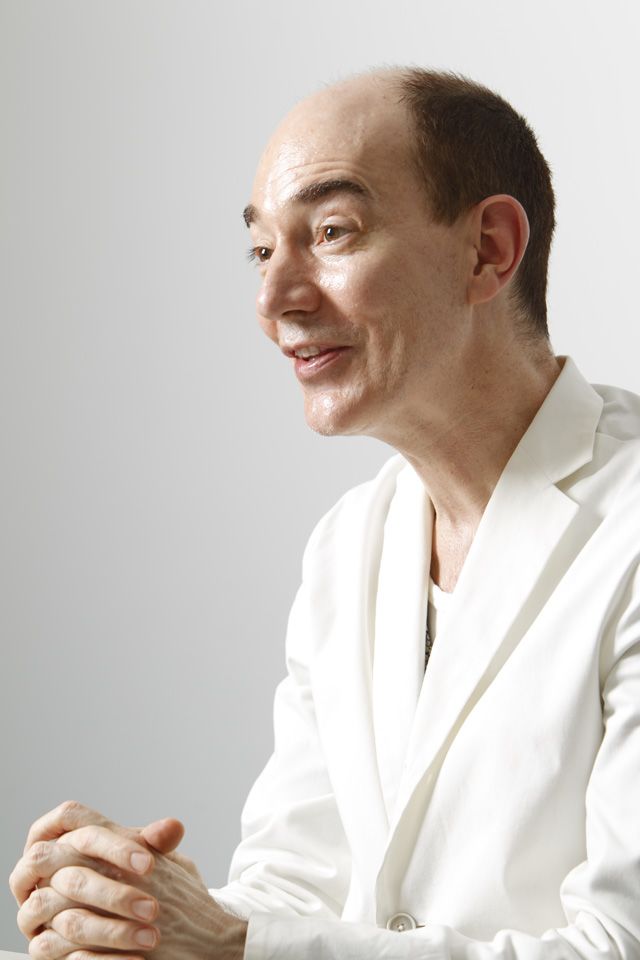 INTERVIEWER What is the appeal of Edo culture for you?
INTERVIEWER What is the appeal of Edo culture for you?
CAMPBELL The focus of my research is the culture of the nineteenth century, starting with the late Edo Bunka-Bunsei period [1804–1829]. This was a time when the publishing of Japanese books took off dramatically, using mostly woodblock printing. All kinds of things were printed: edifying volumes of scholarship and philosophy, travel guides, books about crop failure and famine, collections of haikai poetry written by ordinary people. There were even self-instruction works for people studying the Four Books and Five Classics of the Chinese tradition on their own. Although the older, more refined “high” culture—waka poetry, court romance, and poetry in Chinese—was still alive and well, the “low” culture of the masses was developing dynamically and on an astronomical scale.
INTERVIEWER This is around the time when low-culture lampoons of the traditions and values of high culture start to appear—such as the Nise Murasaki inaka Genji [A Country Genji by a Fake Murasaki] by Ryūtei Tanehiko, which parodies the Tale of Genji.
CAMPBELL They may be far removed from the elegance of the originals, and yet the parodies of the Edo period often contain serious messages and hints on how to live. Another good example would be the hurly-burly romance Nansō Satomi hakkenden [Biographies of Eight Dogs] by Kyokutei Bakin, which describes fantastical incidents set against the backdrop of a faithfully recreated Muromachi-period Japan. (*2) Then there are the ninjōbon books depicting human emotions—love stories like Shunshoku ume-goyomi [Colors of Spring: The Plum Calendar] and Shunshoku harutsuge-dori [Colors of Spring: The Harbinger Bird] by Tamenaga Shunsui, which depict the love affairs of townsmen in the Edo period. The literature of this period offers inexhaustible pleasures. Among the things that make Tamenaga’s works so attractive are their vivid depictions of bustling areas of Edo like Shinagawa and Fukagawa and their descriptions of the men and women of the time and the way they looked.
INTERVIEWER Japan in this period was more or less shut off from the outside world as a result of the policy of national seclusion enforced by the Tokugawa shogunate. Having brought a distinctive culture of its own to maturity during the Edo period, Japan then transformed itself dramatically after the Meiji Restoration in 1868 and suddenly started deliberately and proactively incorporating cultural influences from overseas.
CAMPBELL The Japanese adopted the Chinese writing system in the sixth and seventh centuries, and through the medium of the Chinese language they introduced Chinese culture and civilization. Although they later developed a system for writing in Japanese using phonetic kana derived from kanji [Chinese characters], Japanese people continued to esteem kanbun [classical Chinese] as the medium for serious writing right up into the Meiji era [1868–1912]. Intellectuals used kanbun to order their thoughts, and this provided them with vital training in the art of constructing a logical argument. This was to prove invaluable when Japan turned its attention to the cultures of the West. If you look at the great literary figures of the Meiji era—Mori Ōgai, for instance, who studied German, or Natsume Sōseki, who studied English—I think there’s no question that the expertise and mental discipline they built up through their study of classical Chinese was an essential part of what made it possible for them to translate foreign literature and philosophy into Japanese so accurately. Japan had a long history of incorporating Chinese culture, and this provided an essential foundation when it came to learning the languages and cultures of the West during the Meiji era. I believe this legacy continues to inform Japanese culture to this day.
INTERVIEWER Was there a particular kind of energy in Japanese culture at the time that allowed it to absorb the literature and thought of other cultures so successfully?
CAMPBELL Japan took its first steps toward becoming a unified modern nation state with the Meiji Restoration in 1868. That was just three years after the end of the American Civil War. In Europe, Italy and Germany were unifying around the same time. It was in this context—of a global-scale reorganization of countries and regions—that Japan underwent the Meiji Restoration and began to put together a new type of culture, along with a new style of prose writing based on the spoken language. Actually, this is one of the projects I want to pursue over the next few years—taking a new look at Japanese culture from the Bunka-Bunsei period into the Meiji era from the perspective of world history.
INTERVIEWER Does a knowledge of this period help to shed light on any of the issues confronting Japanese society today?
CAMPBELL The Edo period was marked by a strictly defined social hierarchy. Within this context, the “low” culture of the masses developed by incorporating elements of the “refined” culture of the elite. In the Meiji era, Japan absorbed the literature of the West using a vocabulary derived from Chinese. In both cases, Japanese culture adopted a positive attitude and worked proactively to absorb cultural influences from inside and outside the country. It may be the case that there’s less of this ambition and energy around today. If you look at novels by young writers today, a lot of them tend to be quite limited in perspective—they’re often set in schools and focus narrowly on the daily lives of the protagonist and a few other people. I do sometimes worry about how the Japanese will restore a bit more depth to their culture in the years to come.
INTERVIEWER Japanese manga [comics] and anime [animated films] are growing in popularity overseas, as part of the “Cool Japan” phenomenon.
CAMPBELL I quite like manga personally—there are plenty of good titles out there. But my job is to make people aware that Japan has much more to offer than just anime and manga—the art and literature of the Edo period, for example, as well as remarkable modern writers like Uchida Hyakken and Tanizaki Jun’ichirō.
(*1) ^ The Tale of Genji (Genji monogatari) is the oldest surviving piece of novel-length prose fiction in Japan, written by Murasaki Shikibu, a lady-in-waiting at the imperial court. Known to date back to at least 1008, it depicts the life and loves of “shining” Prince Genji, a nobleman born to one of the emperor’s lower-ranking consorts. More than 400 characters appear over the course of the novel’s 54 chapters, which come to more than 1,200 pages in English translation.
(*2) ^ Nansō Satomi hakkenden was written in the late Edo period by Kyokutei Bakin. Set in the Muromachi period (1333–1568), this epic novel of adventure describes the exploits of eight young men born from the relationship between Princess Fuse of the Satomi clan of Awa and the heroic dog Yatsufusa. Begun in 1814, publication continued for 28 years. This colossal work comprises 98 chapters in 106 volumes.
Savoring Serendipity
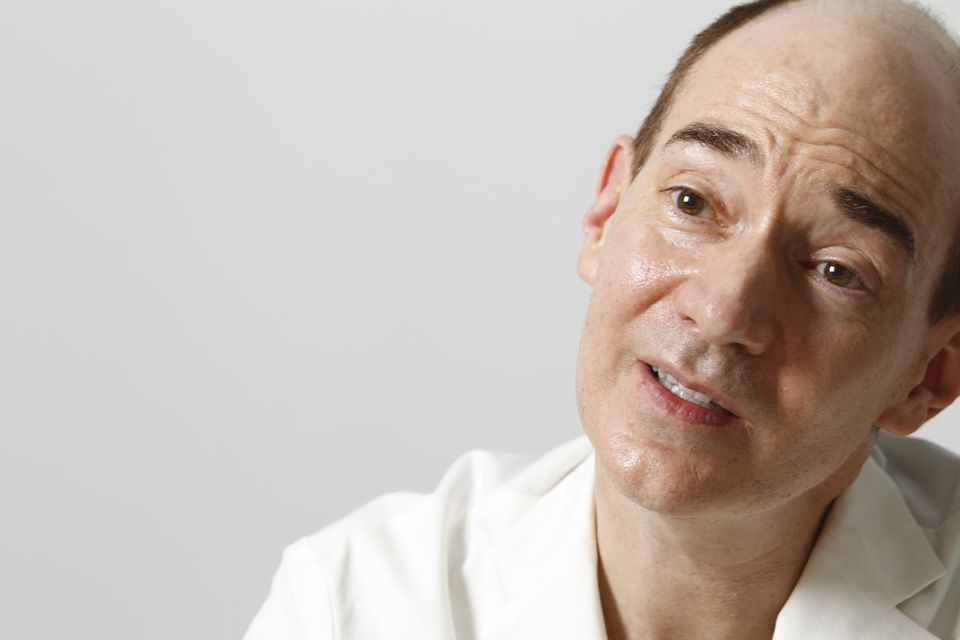 INTERVIEWER The earthquake and tsunami disaster of March 11 claimed thousands of lives and devastated huge swathes of the Tōhoku region. What feelings has the disaster prompted in you?
INTERVIEWER The earthquake and tsunami disaster of March 11 claimed thousands of lives and devastated huge swathes of the Tōhoku region. What feelings has the disaster prompted in you?
CAMPBELL The sakura cherry blossom is one of the best-known symbols of Japan. The beauty of the spring flowers has been celebrated in waka poetry and other forms of literature for centuries. There is an old expression that dates back to the Heian period [794–1185]: sumizome sakura—cherry blossoms dyed black as ink. The idea comes from a legend in which cherry blossoms turned black in mourning after someone’s death. I expected it might be difficult to enjoy the sakura in bloom this year, with the scars of the disaster still so fresh. But when I went to see the blossoms in Shinjuku Gyoen, it came home to me again just how beautiful they really are. I’ve heard several people say that the blossoms were one of the things that gave encouragement and strength to the people of Tōhoku after the disaster.
INTERVIEWER The cherry blossoms have represented a wide variety of emotions for the Japanese over the years. One famous ninth-century waka poem by Ono no Komachi, for example, runs: Hana no iro wa / utsurinikeri na / itazura ni / waga miyo ni furu / nagame seshi ma ni [The flowers withered / Their color faded away, / While meaninglessly / I spent my days in brooding, / And the long rains were falling]. (*3)
CAMPBELL Japan is a country blessed with beautifully changing seasons, but at the same time, it suffers frequent natural disasters—typhoons, earthquakes, and tsunamis. The recent disaster brought home to me how strongly this unpredictable environment has shaped the development of a distinctively Japanese sensibility of impermanence. This is typified by the idea of mono no aware, sometimes translated as a sense of the pity of things. Back in the Edo period, they used to use the expression kobore-zaiwai, which describes an unexpected moment of happiness—serendipity, I suppose we might call it in English. The realization that the world around us will not last forever should make us treasure even more the chance encounters and the little moments of happiness we stumble upon in the course of our lives. This kind of pure-hearted sensibility was typical of Edo-period Japan.
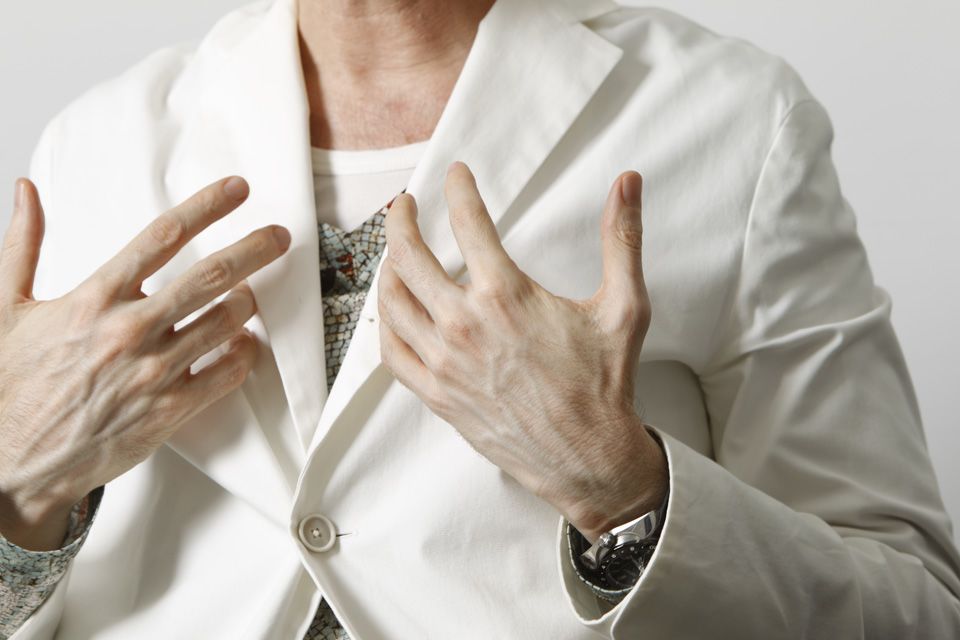 INTERVIEWER The idea is that we should take the time to savor the little pleasures and moments of happiness that fall in our path?
INTERVIEWER The idea is that we should take the time to savor the little pleasures and moments of happiness that fall in our path?
CAMPBELL Let me give you an example. In early May I had an opportunity to visit several of the evacuation centers in an area of Tōhoku devastated by the disaster. The electricity supply had still not been restored, and people were cooking on gas stoves. One of the young women at one of them spent nearly two hours on a nearby hillside and came back with a bucket full of edible wild plants. Everyone was delighted, and people started preparing a meal from the herbs and plants she had brought back. Even in the midst of these terrible conditions, people were still able to express their gratitude—for the natural blessings of the plants, and for the efforts of the woman who had gone to collect them. Despite everything, in other words, they were still able to savor life’s little moments of kobore-zaiwai. Japan was recently overtaken by China as the world’s second-largest economy, and people are warning that the effects of the March 11 disaster will cause Japan’s economic power to slip even further. But at the same time, the disaster may also provide an opportunity for people to reassess the modern Japanese lifestyle. Perhaps people will rediscover the traditional Japanese value system, with its emphasis on the importance of a harmonious relationship with nature. And that may lead to new kinds of cultural expression.
INTERVIEWER What’s the best way for foreigners to experience the kind of Japanese culture you are talking about?
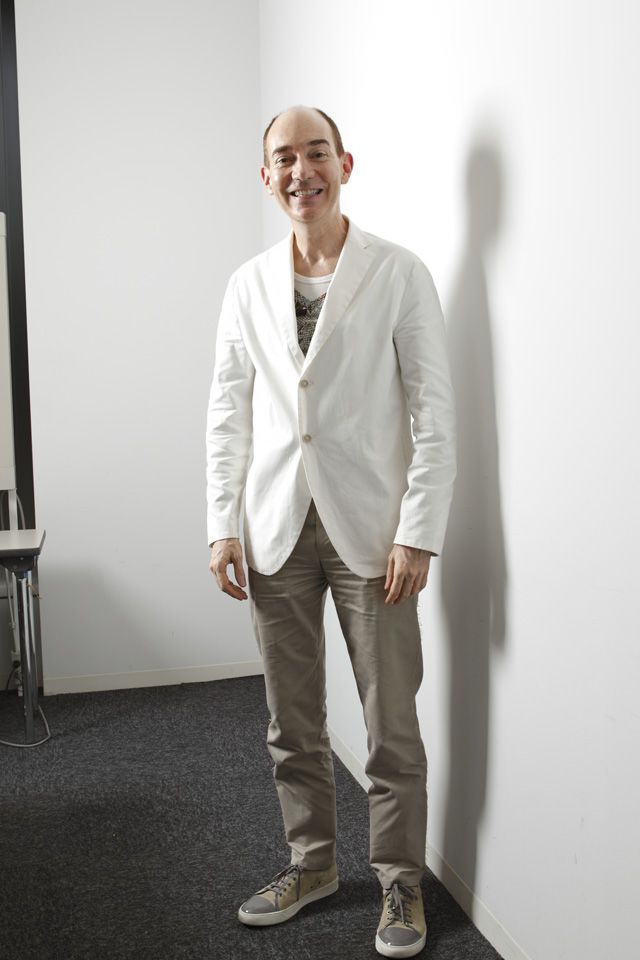 CAMPBELL Of course the best way is for people to come to Japan and see it for themselves. People often assume that Japan must be an expensive place to visit, especially with the yen valued so highly against other currencies at the moment. But in fact you can find roundtrip tickets from the States for as little as 600 dollars, and in Tokyo there are budget accommodations where you can stay for 2,000 to 2,500 yen a night. It’s a very easy place to visit nowadays. Tokyo or Kyoto—it doesn’t matter much where you go. Spend a few days walking around and find something that suits your own personal tastes. Lady Gaga, for example, is a big fan of the soba noodles at a tiny standing-room only place in a Tokyo train station. I think that’s a good approach. Once you start looking, you’ll find your own Japan, one that matches your own tastes and interests.
CAMPBELL Of course the best way is for people to come to Japan and see it for themselves. People often assume that Japan must be an expensive place to visit, especially with the yen valued so highly against other currencies at the moment. But in fact you can find roundtrip tickets from the States for as little as 600 dollars, and in Tokyo there are budget accommodations where you can stay for 2,000 to 2,500 yen a night. It’s a very easy place to visit nowadays. Tokyo or Kyoto—it doesn’t matter much where you go. Spend a few days walking around and find something that suits your own personal tastes. Lady Gaga, for example, is a big fan of the soba noodles at a tiny standing-room only place in a Tokyo train station. I think that’s a good approach. Once you start looking, you’ll find your own Japan, one that matches your own tastes and interests.
INTERVIEWER Thank you for taking the time to talk to us about such a wide range of subjects today. After living so long in Japan and becoming so acclimatized to life here, do you get comments from people saying you’ve changed when you go back to the States?
CAMPBELL I do get that occasionally. Once, when I was at a restaurant in the States with my sister, I unconsciously picked up the plate of pasta in front of me and started eating from it . . .
INTERVIEWER Is it a particularly Japanese custom to lift a dish from the table to eat?
CAMPBELL Well, it’s certainly not something an American would normally do.
INTERVIEWER You have to admit it’s quite convenient . . .
CAMPBELL I tell you, though, my sister scolded me, and I was quite embarrassed myself. [Laughs]
(Translated from an interview in Japanese.)
(*3) ^ Donald Keene, trans. Seeds in the Heart: Japanese Literature from Earliest Times to the Late Sixteenth Century (New York: Columbia University Press, 1999), p. 234.
Japanese literature Japanese language Tale of Genji Edo period Meiji era
